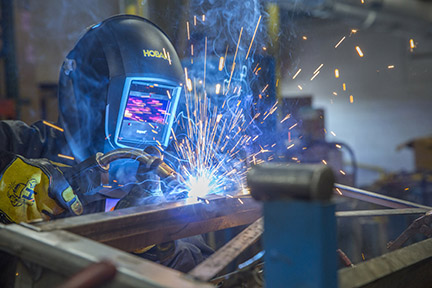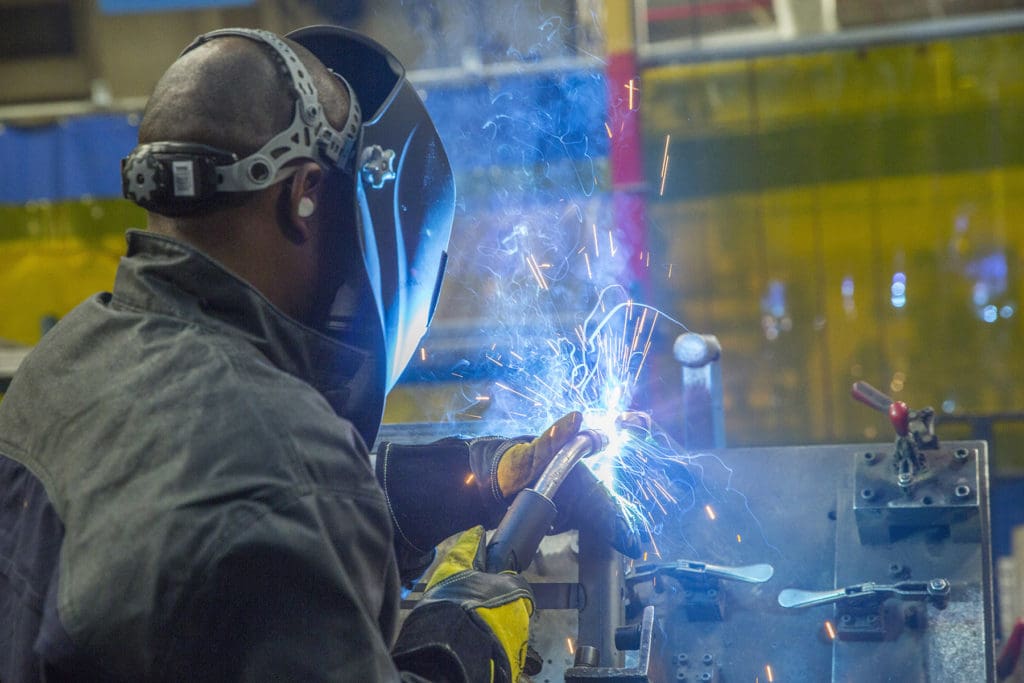Tips for Choosing a Solid Wire for Welding Applications
No two welding operations are the same. Yet in many cases, companies come to rely on similar filler metals to get the job done. Solid wire is among the most widely used filler metals in the industry and is a common choice for applications ranging from general fabrication and manufacturing to maintenance/repair and pipeline welding. The wire’s ease of use contributes to its popularity, as does its ability to weld many types and thicknesses of materials. Welding technology available on the market today also makes it easier for welding operators of varying skill sets to create quality welds with solid wire.
As with any type of filler metal, there are several considerations to keep in mind when choosing a specific solid wire for an application. Different classifications offer varying characteristics for each solid wire, all of which can impact weld strength and quality, as well as the amount of post-weld cleanup needed.

globally and is a common choice for applications that range from
home hobbyists to general maintenance to repair. It can be used
to weld many types and thicknesses of materials, from very thin
metals to thick structural metals for steel buildings.
Solid wire: An overview
The American Welding Society (AWS) provides multiple classifications for solid wire based on the mechanical and chemical properties each provides. Each letter and number in its nomenclature signifies a specific feature. As an example, for a commonly used solid wire — AWS ER70S-6 — the “ER” indicates that the filler metal is an electrode or rod; the “70” signifies that it has a tensile strength of 70,000 pounds per square inch (psi); and the “S” means that it is a solid wire. The 6 reflects the chemical composition and shielding gas requirements.
Solid wires that end in S-3 and S-6 are among the most commonly used in the industry for MIG welding. For TIG welding applications, an ER70S-2 cut-length (or rod) is often used. Solid wires are available in a range of diameters. For MIG welding applications, diameters range from 0.023 up to 1/16 inch, whereas solid wires used in submerged arc welding (SAW) processes can be up to 1/8 inch and larger. TIG cut-lengths are available in diameters of 1/16 to 5/32 inches. Typical operating parameters for solid wire depend upon these diameters and in a MIG or SAW process, also on wire-feed speed. The wire feed speed is proportional to the amperage used for the welding application. Voltage can range from 14 volts to more than 30 volts.
When using solid wires, spray transfer and short-circuit transfer are two common welding modes. The transfer mode used for an application depends the shielding gas and the welding parameters. To achieve spray transfer mode requires a minimum of 85 percent argon in the shielding gas mixture. The result of this mixture is less undercutting and a more fluid, controllable puddle. The preferred gas for short-circuiting transfer mode is 75 percent argon/25 percent CO2, which provides good arc transfer, lower levels of spatter and a nice appearance of the completed weld bead.
Common types of solid wire
Each classification of solid wire has unique benefits, limitations and best uses. Following are some common types of solid wires, along with their attributes.
AWS ER70S-6 solid wires
An ER70S-6 solid wire is the most common choice for welding mild steel. This widely available wire is found in general fabrication, automotive welding applications and can be used for robotic welding, as well as to complete root passes for pipe welding and other critical or industrial applications. It offers smooth and consistent wire feeding, which helps support greater productivity (there is less downtime to address feeding issues), and the wire helps to increase consumable life. With the proper use, it creates smooth weld beads with uniform tie-in.
Welding operators can use ER70S-6 solid wire with 100 percent CO2 to increase joint penetration or with an argon/CO2 blend to help minimize spatter. They should also be aware that these wires tend to generate silicon island deposits on the surface of the completed weld. They will need to remove these deposits prior to painting or other types of surface conditioning, which may increase time for post-weld cleaning.
While solid wires generally generate low spatter levels on clean base materials, they may not be the best option for welding contaminated metals. If, however, there is no alternative, an ER70S-6 wire may be helpful for welding through light rust or mill scale. This wire contains higher silicon and manganese content, which act as excellent deoxidizers.

deposit very little slag, resulting in minimal post-weld cleanup.
Because of this, solid wire is commonly used for tack welding or
other applications where a clean surface is important.
AWS ER70S-3 solid wires
ER70S-3 solid wire is another common choice and is used primarily in applications where a clean finished weld is important. Like an ER70S-6 product, this wire provides good wire feeding, but it also generates a clean weld deposit that can be ready to paint or plate with very little post-weld cleaning. This solid wire is a common choice in automotive and automated welding applications, as well as general fabrication, light sheet metal fabrication and in applications requiring high wire feed speeds.
Also like an ER70S-6, this wire can be used with 100 percent CO2 or with an argon/CO2 mix, depending on if greater joint penetration or low spatter is the desired outcome.
AWS ER80S-D2 solid wires
When welding carbon and low-alloy steels, an ER80S-D2 low-alloy solid wire provides higher tensile and yield strength. This wire results in quality welds matched to meet the requirements of many high-strength applications, such as welding construction equipment, pipe, trailers and more. The D2 designator indicates this wire is a manganese-moly alloy. Manganese is a deoxidizer that makes this wire a good option for rusty or dirty metals, and it also helps increase the tensile strength. The molybdenum also offers hardenability, in addition to high-temperature strength.
The higher-alloy content in the ER80S-D2 wire can make the arc in a spray transfer mode slightly more difficult to control, resulting in increased spatter. To combat this issue, welding operators may prefer to use a pulsed MIG process instead.
Copper-free solid wires
Most solid wires available in the industry have a small amount of copper plating. This plating helps prevent corrosion of the wire and helps enhance the electrical conductivity between the contact tip (which is also copper) and the steel base material. Adding copper to certain steel base materials, however, can cause problems. In applications where that is a concern, welding operators may prefer to use a copper-free wire.
A benefit to copper-free wire is that it can be used at a slightly lower voltage in spray transfer mode, compared to the same wire with copper plating. For thinner materials, spray transfer mode allows for faster welding and a better deposition rate than short-circuit welding. This change in process can help reduce spatter and minimize heat in the arc to lessen the chance of burnthrough.
When using a copper-free wire, companies need to be sure that the spool or coil of wire isn’t stored for long periods of time in the shop or on the jobsite, as the absence of copper can cause the product to rust. A copper-free wire may also cause arcing between the contact tip and base material if the surface finish or lubricant isn’t correct; the welding operator may need to adjust welding parameters as a defense against this problem.
Versatile options
As with any welding operation, finding the right filler metal is key to gaining good productivity and quality, while also minimizing costs. Solid wires can offer versatility in many general fabrication applications that require the welding of mild steel and low-alloy steel. Always take care to select the right classification of wire for the job — based on the desired mechanical and chemical properties — and to consult with a distributor or filler metal manufacturer for assistance when in doubt about the best choice.



